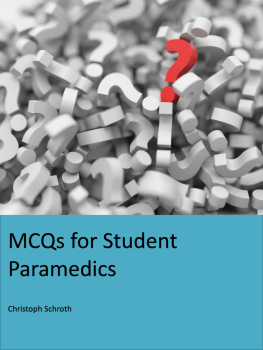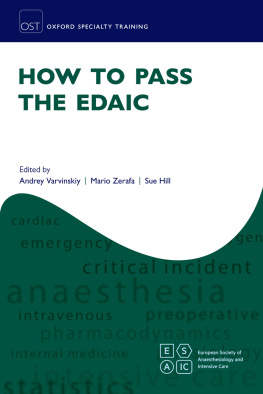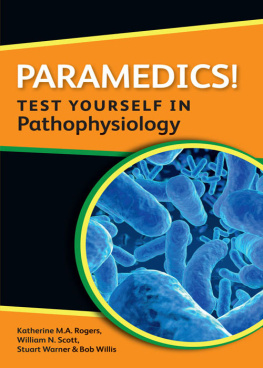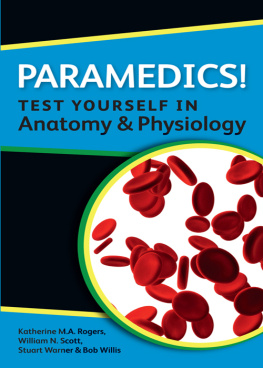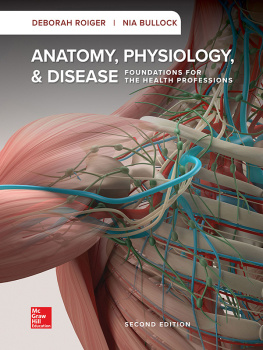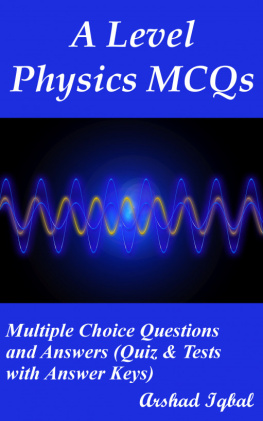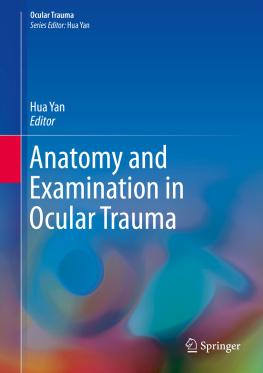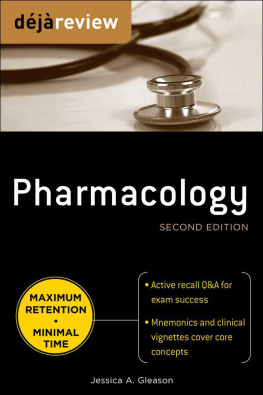MCQs for Student Paramedics Covering anatomy & physiology, pharmacology, medical conditions, trauma & resuscitation. By Christoph Schroth
Copyright 2019 Christoph Schroth No portion of this book may be reproduced in any form without permission from the publisher, except as permitted by UK & international copyright law.
Why multiple-choice-questions? Multiple-choice questions are a quick way of testing your knowledge or discovering an area to improve in. This is a collection of peer-reviewed questions suitable for student paramedics at any stage of their education, covering key areas of anatomy & physiology, pharmacology, medical conditions, trauma and resuscitation. The answers can be found at the end of each chapter. Thank you for taking the time to read this book.
Please also have a look at my author page on Amazon for other available titles. I would appreciate it if you would leave a review of this book. Ideas and suggestions are also always appreciated. I sincerely hope you will enjoy it, Christoph
Table of Contents
Chapter 1 Anatomy & Physiology
Question 1: Cardiac output can be calculated using which formula? a) CO = HR x SV b) Q = HR x SV c) CO = HR x SV x SVR d) All of the above Question 2: Which one of these statements is true? a) Erythrocytes are red blood cells b) Leukocytes are white blood cells c) Platelets and thrombocytes are the same thing d) All of the above Question 3: Arterial pH should be: a) 7.31 7.41 b) 7.35 7.45 c) 7.45 7.55 d) 7.25 7.55 Question 4: Bells palsy is a palsy of which cranial nerve? a) V Trigeminal b) VI Abducens c) VII Facial d) VIII Vestibulocochlear Question 5: The scaphoid is a: a) Metacarpal b) Carpal c) Metatarsal d) Tarsal Question 6: The lub sound of the lub dub heart sound is caused by what happening within the heart? a) The SA node depolarising b) Bicuspid and tricuspid valves closing c) Bicuspid and tricuspid valves opening d) Aortic and pulmonary valves closing Question 7: Which of these is not a response of the sympathetic nervous system? a) Nose glands produce more mucous b) Liver releases additional glucose c) Immune & reproductive system suppressed d) Increased sweating Question 8: Which parts of the brain form part of the limbic system? (Select all that apply) a) Cingulate cortex b) Hypothalamus c) Hippocampus d) Amygdala Question 9: Which tissue type is the body made up of? a) Connective tissue b) Nervous tissue c) Muscular tissue d) All of the above Question 10: Which of these are functions of the skin? (Select all that apply) a) Absorption & protection b) Sensory c) Vitamin D synthesis d) Excretion Question 11: Sphenoid, ethmoid, temporal & parietal are part of the: a) Skull b) Wrist c) Foot d) None of the above Question 12: Which of the following are part of the endocrine system? a) Glands b) Chemical messengers c) Islets of Langerhans d) All of the above Question 13: What is the correct order of the meninges, from the brain, outwards? a) Pia mater, dura mater, arachnoid mater b) Pia mater, arachnoid mater, dura mater c) Dura mater, arachnoid mater, pia mater d) Dura mater, pia mater, arachnoid mater Question 14: Which of these statements about zygotes is true? a) Once fertilised it develops into an embryo b) It begins its life as a single cell c) Its development involves two gametes d) All of the above are true Question 15: Which of these are types or components of bones? (Select all that apply) a) Sesamoid b) Osteoblast c) Haversian d) Periosteum Question 16: Telescoping of the bowel is referred to as: a) Intussusception b) Colitis c) Cholecystitis d) Diverticular disease Question 17: Renal calculi is commonly referred to as: a) Gallstones b) Constipation c) Kidney stones d) Crohns disease Question 18: Diffuse pain in the abdomen would be: a) Epigastric pain b) Difficult to pinpoint c) Located at McBurneys point d) In the right iliac fossa Question 19: A significantly increased breathing rate can lead to: a) Hypercarbia b) Barocapnia c) Hypocapnia d) Acidosis Question 20: Laryngotracheobronchitis is commonly known as: a) Croup b) Epiglottitis c) Pneumonia d) Dysphagia Question 21: The coloured part of the eye is referred to as the: a) Cornea b) Pupil c) Iris d) Retina Question 22: The cerebellum is responsible for which of the following? a) Higher intellectual powers b) Smooth muscle control c) Sneezing d) Proprioception Question 23: Down syndrome is a trisomy of which chromosome? a) 20 b) 21 c) 22 d) 23 Question 24: The brain has how many ventricles? a) 1 b) 5 c) 4 d) 2 Question 25: The subscapularis belongs to which muscle group? a) Rotator cuff b) Quadriceps c) Triceps d) Pectoral
Answers Chapter 1
1 d 2 d 3 b 4 c 5 b 6 b 7 a 8 all 9 d 10 all 11 a 12 d 13 b 14 d 15 all 16 a 17 c 18 b 19 c 20 a 21 c 22 d 23 b 24 c 25 a
Chapter 2 Pharmacology
Question 26: 1mg of adrenaline in 10ml of sodium chloride (e.g. in a pre-filled syringe) equates to how many milligrams per millilitre? a) 0.1 mg/ml b) 0.01 mg/ml c) 1.0 mg/ml d) None of the above Question 27: What does half-life mean? a) The time it takes a drug to reach the liver or kidneys b) The time it takes a drug to reach half its original concentration in the bloodstream c) The time half-way between administration and peak plasma concentration d) The interval between repeat dosages Question 28: Midazolam may cause which of the following? a) Anxiety b) Hypotension c) Agitation/Aggression d) All of the above Question 29: What is bioavailability? a) How much of a drug is present after first-pass metabolism b) The average concentration of a drug in the bloodstream c) The percentage of an administered drug available in the bloodstream d) How much of a drug is available before being metabolised by the liver Question 30: Which of the following statements is correct? a) Enteral medications are absorbed in the gastro-intestinal tract b) Parenteral medications bypass the gastro-intestinal tract c) Rectal and oral are both routes of enteral drug administration d) All of the above are correct Question 31: Which mechanism would make glyceryl trinitrate spray and tablets largely ineffective, if they were swallowed, instead of being administered sublingually? a) The therapeutic window effect b) Coriolis effect c) First-pass metabolism d) All of the above Question 32: Subcutaneous injections are performed at what angle to the skin? a) 15 degrees b) 30 degrees c) 45 degrees d) 90 degrees Question 33: Which drugs are included for administration in an emergency under The Human Medicines Regulations 2012, Schedule 19? a) Adrenaline 1:1000 (max. 1mg) in anaphylaxis b) Atropine sulphate c) Glucagon injection d) All of the above Question 34: Tranexamic acid (TXA) is what type of pharmacological agent? a) Fibrinolytic b) Anti-fibrinolytic c) Platelet aggregation inhibitor d) All of the above Question 35: Carbamazepine, phenobarbital and phenytoin are all what types/class of drug? a) Antipyretics b) Alpha-agonists c) Anticonvulsants d) Anxiolytics Question 36: Which of the following statements about receptor stimulation are true? a) Alpha 1 receptors vasoconstriction & increase of blood pressure b) Beta 1 receptors - increase of heart rate & strength of cardiac contraction c) Beta 2 receptors - bronchodilation d) All of the above Question 37: Which of these food products/supplements are likely to potentiate the effects of warfarin? a) Garlic b) Cumin c) Cardamom d) None of the above Question 38: An overdose with a tricyclic anti-depressant is likely to lead to which signs & symptoms? a) Depressed level of consciousness b) Hypotension & hypothermia c) Seizures d) All of the above Question 39: Which of the following suffixes of a generic medication name is most likely a beta-blocker? a) -olol b) -pril c) -mycin d) zide Question 40: The mechanism of action of which drug does not involve cyclooxygenase (COX) enzymes? a) Aspirin b) Paracetamol c) Chlorphenamine d) All of the above Question 41: An oxygen cylinder left in a vehicle on a hot day would be affected by which law? a) Henrys law b) Charles law c) Boyles law d) None of the above Question 42: Drugs delivered via nebuliser to a pregnant patient will show results quicker than in a non-pregnant patient.
Next page
